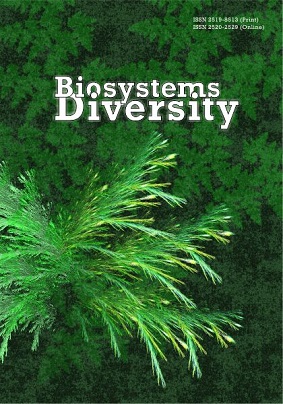Трансформация разнообразия орнитофауны под действием рекреационной нагрузки
Transformation in the diversity of avifauna under the influence of recreational load
Author(s): T. V. ShupovaSubject(s): Sociobiology, Transformation Period (1990 - 2010), Present Times (2010 - today)
Published by: Дніпропетровський національний університет імені Олеся Гончара
Keywords: species diversity; ecological structure; birds community;
Summary/Abstract: This article examines the bird community of a large reservoir and its surrounding area , located in the central part of a large city in the northern part of the steppe zone of Ukraine. The city, Krivoy Rog, has a population of over 700,000 people. Large areas of the city have undergone dramatic transformation. Industrial and residential areas of the city are located around the reservoir. The shores of the reservoirs are subject to recreational loading. The natural landscape here is a combination of steppe habitats and scubland. The material for this study was collected in the breeding seasons of 1996, 1999, 2012, 2015. The number and distribution of birds were determined by registrations of birds along transects. The diversity index, dominance and evenness of species distribution in the breeding bird communities were compared for different habitats and different years. In breeding season 73 bird species belonging to 15 orders were found on the territory of the reservoir. Of these, 62 species bred, and 11 more used the area for foraging but bred in adjacent habitats. 24 species were present in winter. The average density of the breeding birds per species increased from 1.8 ± 0.4 pairs/km of survey route in 1996 to 3.2 ± 0.8 pairs/km in 2015. The dominant species in the breeding bird communities were Passer Montanus L., Sturnus Vulgaris L., Parus Major L., Fulica Atra L., Podiceps Cristatus L. In the period 1996–1999 the habitat conditions in the territory of the water reservoir changed. These changes were associated with mass recreation of city residents here. The changes resulted in a stressful situation for the habitats and the bird communities. The changes resulted in an imbalance in the development of the bird communities. Since 2012 the birds adapted to the new environmental conditions and formed a new community. By 2015, the species diversity of birds had increased, the degree of pressure on the dominant species and the species distribution of the species had leveled off. The number of bird species nesting in the habitats of the water reservoir had increased. Within the bird communities ground and cavity nesting birds were replaced by woodland-nesting species. Transformation of bird habitat had a decisive impact on the development of the community of nesting birds. The differences in ecological characteristics of the community of birds were expressed along the gradient of transformation of habitats: the proportion of ground-nesting species in the community fell, species diversity was reduced, the dominant species increased their pressure on the bird community and the distribution of species abundance became more uniform. Against the background of these changes, the diversity of breeding species increased in the tree plantations, as compared to transformed natural habitats. This is evidence, that the development of the bird communities in artificially created habitats and development of bird communities in transformed habitats takes place in different ways and in different directions.
Journal: Biosystems Diversity
- Issue Year: 25/2017
- Issue No: 1
- Page Range: 45-51
- Page Count: 7
- Language: Russian

